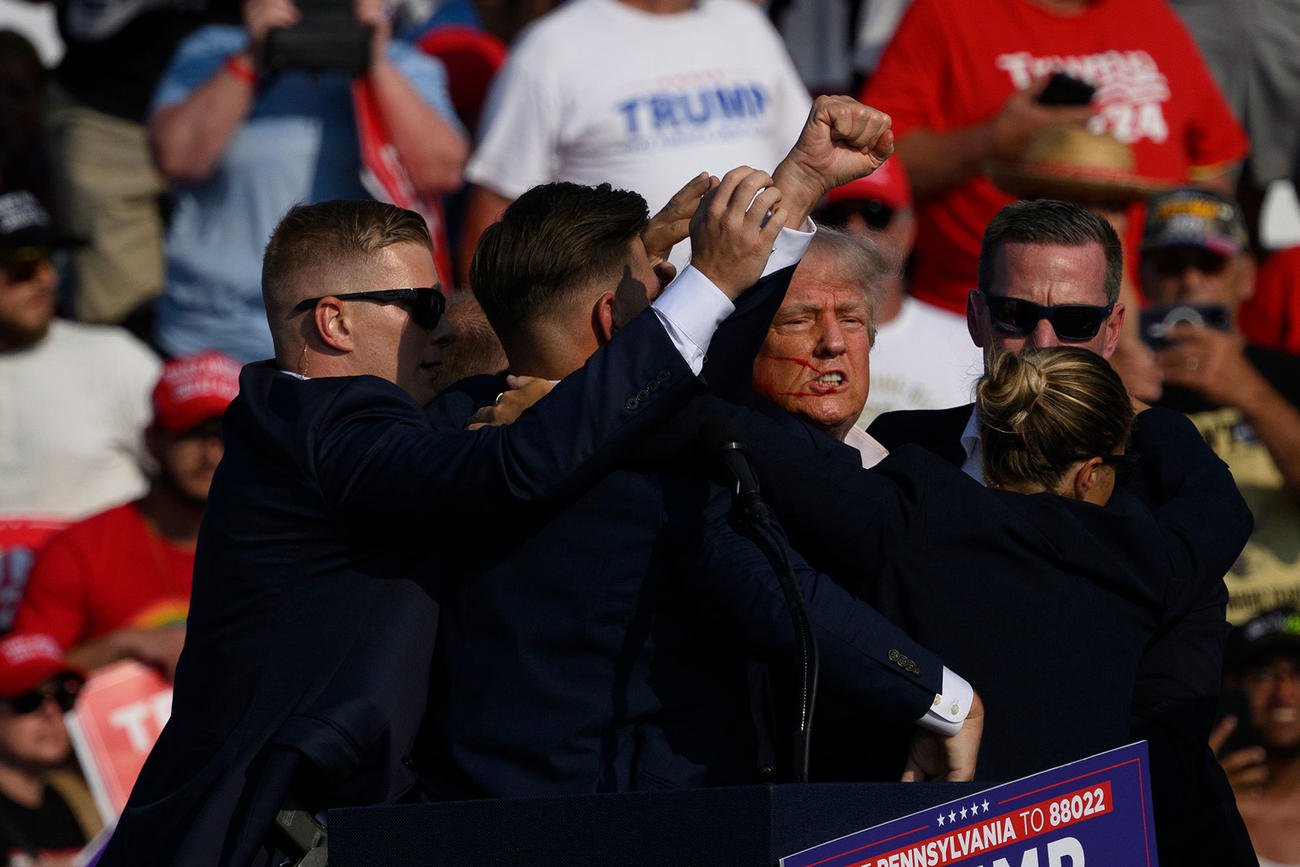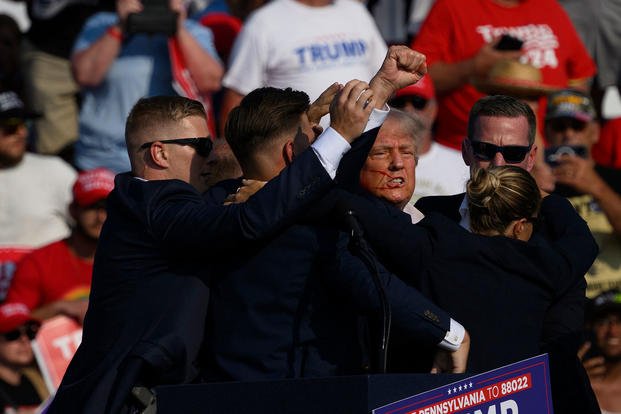

WASHINGTON — Local and state law enforcement members from Pennsylvania told lawmakers Thursday that they did precisely what the U.S. Secret Service asked of them, with little or no follow-up direction from the agency leading security at the Butler rally where a would-be assassin nearly took Donald Trump’s life in July.
The bipartisan House task force investigating a pair of attempts on Trump’s life in two months held its first hearing Thursday, with the Secret Service facing intensifying scrutiny for admitted breakdowns in communications and protocol in Butler.
Edward Lenz, an Adams Township Police Department sergeant and commander in the Butler County Emergency Services Unit, testified that the Secret Service “never gave us direction” for the unit’s two sniper teams. He also told lawmakers that the Butler County ESU “provided a total manpower of 44 persons, exceeding the number requested by the Secret Service.”
Butler County provided two counterassault teams, two sniper teams and a quick reaction force, Lenz said. None were ever asked by Secret Service specifically to cover the rooftop of a building where 20-year-old gunman Thomas Matthew Crooks eventually opened fire, Lenz said — even though the Secret Service has acknowledged that concerns about sight lines from the AGR complex arose during security checks leading up to the rally.
“We were prepared in the mission they had given us,” Lenz told task force chairman Rep. Mike Kelly, R-Butler, who pressed witnesses on whether the Secret Service adequately prepared local law enforcement. In hindsight, Lenz said, “there were additional things that needed cover. They never asked us.”
“At no point during planning was Butler asked to deploy a sniper team to the roof of the AGR complex,” he said. “At no point in our operations plan did we ever say that we would deploy a sniper team to the roof of the AGR complex. From their positions inside the AGR building, the snipers were not able to see the roof where the shooter was located, and again, that was not within their area of responsibility.”
John Herold, a Pennsylvania State Police lieutenant, told the task force, “We provided what they asked for,” including more than 30 troopers who assisted with perimeter security and the former president’s motorcade.
“(Pennsylvania State Police) provided all resources requested by Secret Service,” he said, adding that the federal agency did not request that he assign a vehicle or trooper to the AGR property or its rooftop.
Drew Blasko, a patrolman in Butler Township Police Department, said that “there’s always things you think you can do better,” but that local officers were as prepared as possible and did their best “with the information we had.”
Lenz emphasized that “Butler County is our home,” with many at the scene being family members, friends and neighbors. His own wife was embedded with the team providing treatment to those who were shot. Trump and two others were injured and former firefighter Corey Comperatore was killed in the shooting.
The local law enforcement at the site “took their jobs serious and their responsibility serious,” Lenz said.
The local law enforcement witnesses Thursday morning appeared reluctant to criticize the Secret Service directly.
But their testimony otherwise aligned with some of the findings detailed in a Senate Committee on Homeland Security and Governmental Affairs report released Wednesday that suggested local police in Butler County went into the days leading up to the rally feeling “like there was no plan.”
The Senate committee noted that even two days before the campaign stop, Secret Service agents still could not answer basic questions such as where the stage would be placed at the Butler Farm Show grounds.
Reps. Cory Mills, R-Fla., and Eli Crane, R-Ariz., who were not chosen for the bipartisan task force, challenged the task force to think outside the box in a second panel during Thursday’s hearing. The congressmen, who previously launched an independent inquiry into the assassination attempt, have been highly critical of the Secret Service and other agencies, with Mills stating that the events in Butler represented “far more than just criminal negligence” and perhaps that there were “nefarious purposes” involved.
Democrats on the task force, who told reporters they were not prepared for the testimony, skipped the second panel.
Mills and Crane argued that there were obvious failures at the Butler rally, particularly in planning at an outdoor event with several high-ground points that presented danger. They also noted that the two recent assassination attempts were conducted by people without professional military experience, and that a professional would have a greater likelihood of success, especially without substantial overhauls in Secret Service protocols and culture.
Mills and Crane thanked the task force for its work but encouraged lawmakers to not worry about being labeled “conspiracists,” and to even consider that there may have been a second gunman. The FBI has said several times there is no evidence Crooks acted with a co-conspirator whether foreign or domestic.
Kelly, asked about Democrats’ reaction to the second panel, said after the hearing that his aim is not partisan. He said it was natural to hear out Mills and Crane in part due to their military expertise.
Ronald Rowe Jr., the acting director of the Secret Service, told reporters last Friday that line-of-sight concerns “were not escalated to supervisors” — amounting to “complacency … that led to a breach of protocols.”
“These employees will be held accountable,” he said, declining to provide details on the personnel involved.
Also testifying Thursday were Patrick Sullivan, a former U.S. Secret Service agent, and Dr. Ariel Goldschmidt, Allegheny County’s medical examiner.
Kelly said the House task force is on track to release its full findings in December.
He said the 13-member group had identified security failures on multiple fronts.
The chairman highlighted three key factors: the Secret Service failed to adequately plan, creating confusion among local law enforcement partners; public access to the site less than 150 yards from the stage was poorly managed; and communications breakdowns — with agencies grappling with heavy radio traffic and unable to fully communicate across various channels — leading to “information in a moment of crisis (going) through radio, texts and phone calls, way too slowly.”
“At the end of the day, I believe all this could have been prevented,” Kelly said.
_____
(c)2024 the Pittsburgh Post-Gazette. Visit the Pittsburgh Post-Gazette at www.post-gazette.com. Distributed by Tribune Content Agency, LLC.
© Copyright 2024 Pittsburgh Post-Gazette. All rights reserved. This material may not be published, broadcast, rewritten or redistributed.
